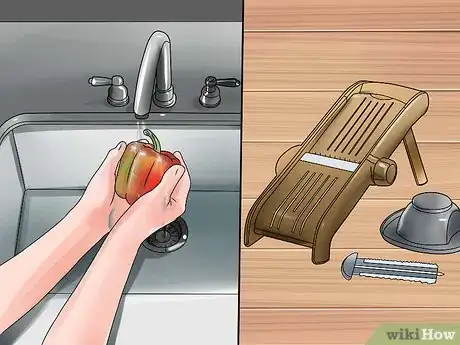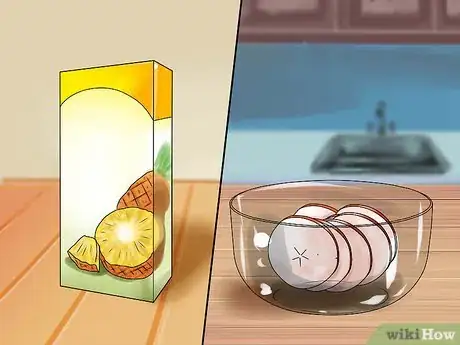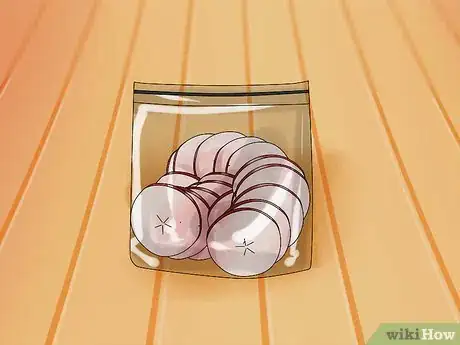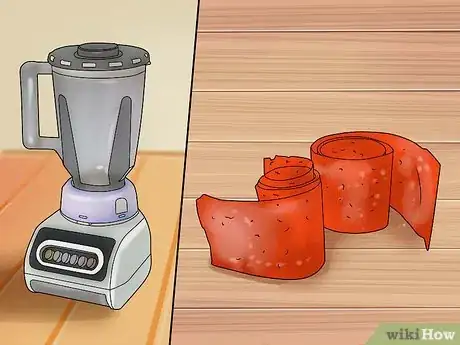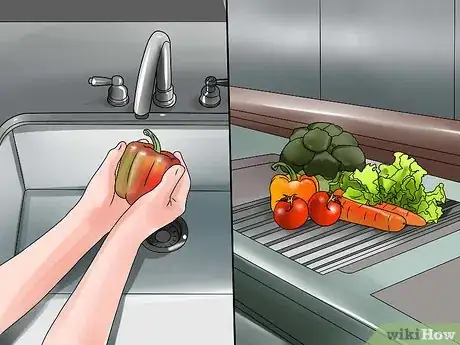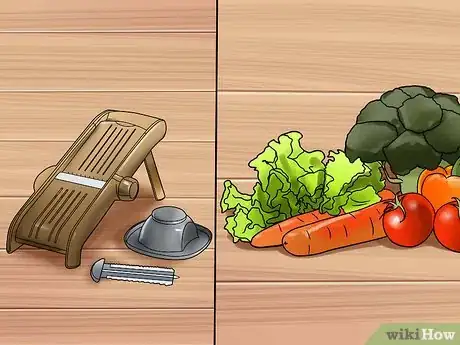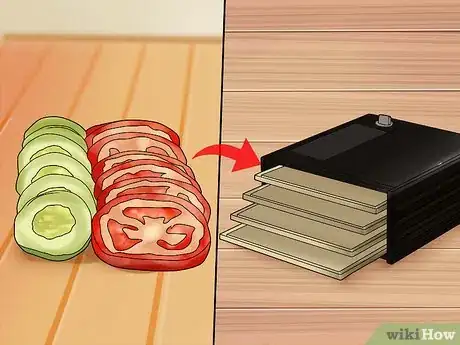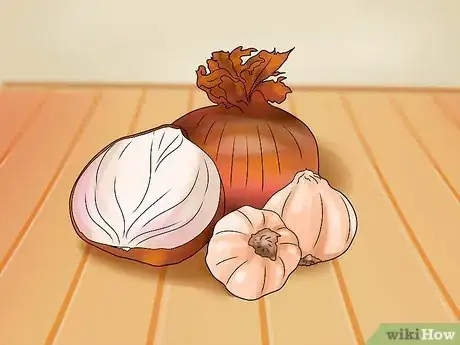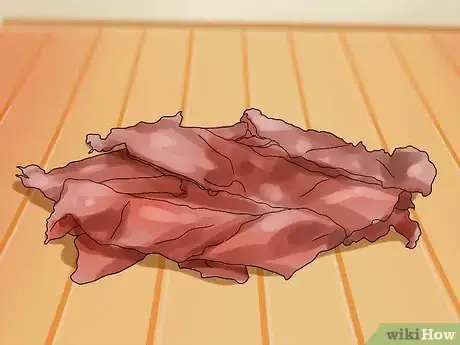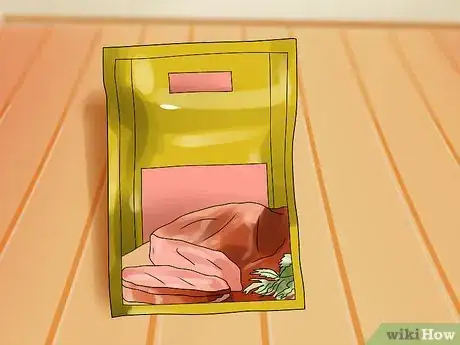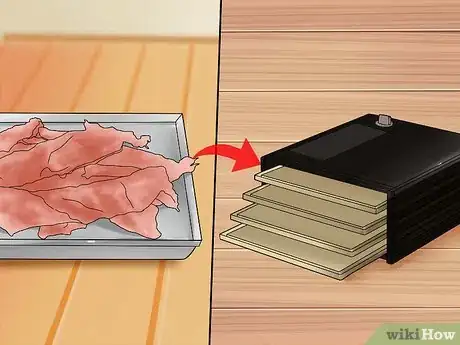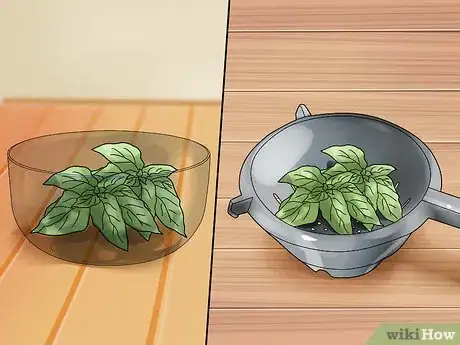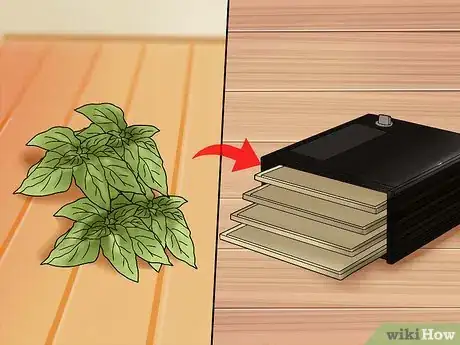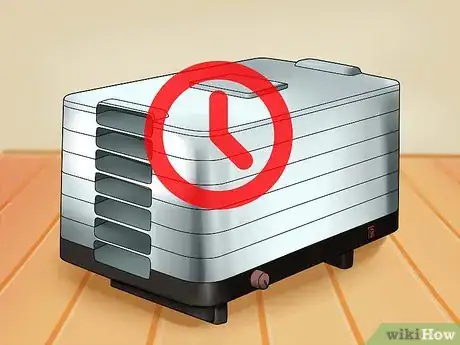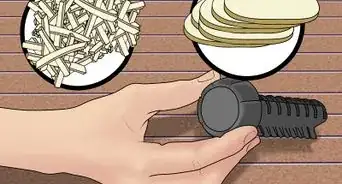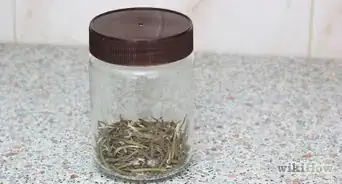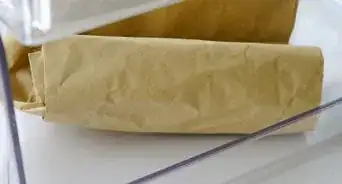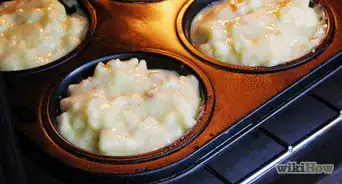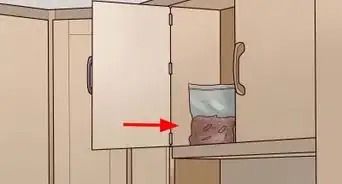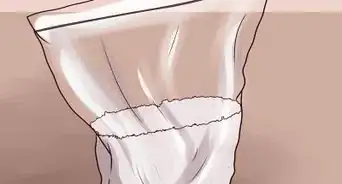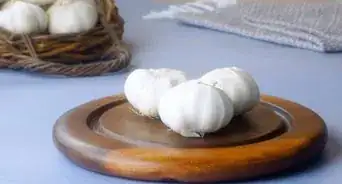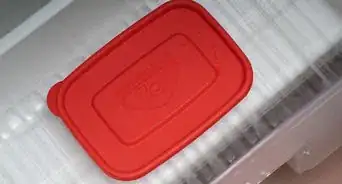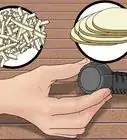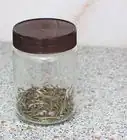wikiHow is a “wiki,” similar to Wikipedia, which means that many of our articles are co-written by multiple authors. To create this article, 14 people, some anonymous, worked to edit and improve it over time.
This article has been viewed 105,130 times.
Learn more...
Food dehydration is a popular form of food preservation, and it has been for centuries. Modern cooks have the benefit of electric dehydrators that can hasten the process of removing moisture from food, often preserving food within 12 hours or less. Dehydrated foods are also considered to be part of the raw food movement, since the water is removed from a raw food at very low heat, leaving many of the nutrients and enzymes intact. This article will show you how to use a food dehydrator on fruits, vegetables, meat and herbs.
Steps
Drying Fruit
-
1Clean all areas carefully, wash all counters with antibacterial spray and rinse. Wear gloves so oils from your hands do not transfer to the food.
-
2Clean and dry fruit. Cut using a sharp knife or mandoline.Advertisement
-
3Mix lemon, lime or pineapple juice with water, in a ratio of 1 to 4. This is called a citrus bath. It is used with some fruits and vegetables to lock in enzymes and avoid browning of the produce's flesh. Bananas and apples should be soaked for 5 minutes in a citrus bath, shaken off, and then placed on the dehydrator's trays. Strawberries and cherries do not need to be pretreated.
- Use an apple peeler to peel apples before hydrating, if you plan on dehydrating a lot of apples. They will allow you to slice them easily and cut the amount of time it will take you to dry your batch.
- Pit cherries and cut in half before dehydrating. They can take between 12 and 20 hours.
- Dry cranberries by freezing them, boiling them and then laying them out on the dehydrator.
-
4Place evenly on the drying fans/racks, so they do not overlap. Plug in the dehydrator, cover and set the temperature. Fruit is usually dried at temperatures between 54 and 63 degrees Celsius (130 to 145 degrees Fahrenheit).
- Drying times vary between dehydrators. The more liquid content the fruit have, the longer they will take. Oranges, tomatoes, lemons and bananas usually take 10 hours or longer. These are great to dehydrate overnight.
- Dry fruits with equal time. They will not leech flavors from each other.
-
5Store your dehydrated fruits and vegetables in jars or airtight plastic bags, since oxygen makes them spoil more quickly. Place them in a cool, dark pantry to ensure they cannot be spoiled by sunlight or heat.
-
6Make fruit leather by mixing fruits and vegetables with a little water in a blender. Spread the mixture on plastic wrap at 43 to 48 degrees Celsius (110 to 118 degrees Fahrenheit) for 4 hours. When the leather is dry on the bottom side, peel it off the plastic wrap and put it with the opposite side down on the fan of the dehydrator. Dry for 1 to 2 more hours, until it is at your desired consistency.
Drying Vegetables
-
1Clean and dry your vegetables. Vegetable dehydration is common with gardeners who like to preserve the excesses of their harvest for the winter months.
-
2Cut vegetables into uniform slices. Use a mandoline or a meat slicer to achieve this easily. It is important to have uniform slices so that they take the same amount of time to dry.
- Many vegetables need to be pre-processed in order to avoid a change of color. Steam broccoli, eggplant and carrots for a short time.
- Blanche summer squash, cauliflower, potatoes, sweet potatoes or carrots until they are soft but still crisp. To blanche means to plunge something in boiling water for a few seconds or minutes, then put them on ice. This locks in enzymes and starches so it will contain the same enzymes and be nutritious when it is rehydrated. You do not need to pre-process zucchini. Spray lemon juice on carrots to keep the color.
-
3Place vegetables evenly on the racks, without overlapping. Dehydrate using temperatures between 54 and 63 degrees Celsius (130 and 145 degrees Fahrenheit).
- To create roasted flavors in your peppers, cut them in half, broil them until they start to blister, cool and then dehydrate them skin side down.
-
4Dehydrate garlic and onions separately. Other vegetables will absorb the flavor if you dry them together.
Drying Meat
-
1Cut meat into thin strips to make jerky.
-
2Choose a meat marinade. Most recipes have a high salt content combined with combination black pepper, brown sugar and sauces.
-
3Mix the marinade ingredients separately. Spread the marinade generously, on all surfaces of the meat. Store in a covered glass dish for 12 hours.
-
4Place strips on the dehydrator racks, without overlapping. Dry for 4 hours at 60 to 70 degrees Celsius (140 to 160 degrees Fahrenheit). Check jerky. Dry for the remainder of the time at 54 degrees Celsius (130 degrees Fahrenheit). Jerky is done when it cracks, not breaks, when you bend it.
- Jerky will last between 1 and 2 months, but can be frozen to last longer.
Drying Herbs
-
1Wash and dry your herbs. Remove thick stems.
-
2Place your herbs on the drying rack without overlapping. If you are drying seeds, place them on cheesecloth in the dehydrator.
-
3Dry for 4 hours or less. Check the herbs often, as they are delicate. When they are crisp and dry, remove them. Store in an airtight container for use up to a year after they are dry.
Community Q&A
-
QuestionDo I need to take empty trays off if I don't want to use all of them to dehydrate?
 Community AnswerIt is not necessary to remove the trays for the dehydrator to function properly. However, you will need to clean them when you are done with dehydrating, so it would probably save you some work in the end to remove them.
Community AnswerIt is not necessary to remove the trays for the dehydrator to function properly. However, you will need to clean them when you are done with dehydrating, so it would probably save you some work in the end to remove them. -
QuestionWill garlic odor remain in plastic dehydrator trays?
 Community AnswerNot if you wash the trays with distilled vinegar -- it will remove the odor.
Community AnswerNot if you wash the trays with distilled vinegar -- it will remove the odor. -
QuestionIf my dehydrator uses air instead of heat, should I leave the vent holes open or closed?
 Community AnswerYou definitely want to leave them open. Having the vents open allows the food to dry out more efficiently.
Community AnswerYou definitely want to leave them open. Having the vents open allows the food to dry out more efficiently.
Warnings
- Try not to use salt when you dehydrate vegetables, or they will take longer to rehydrate.⧼thumbs_response⧽
Things You'll Need
- Food dehydrator
- Ascorbic acid or lemon, lime or pineapple juice
- Raw fruits or vegetables
- Gloves (plastic or latex)
- Bowl
- Blender (optional
- Mandoline or a meat slicer
- Apple peeler (optional)
- Airtight containers

